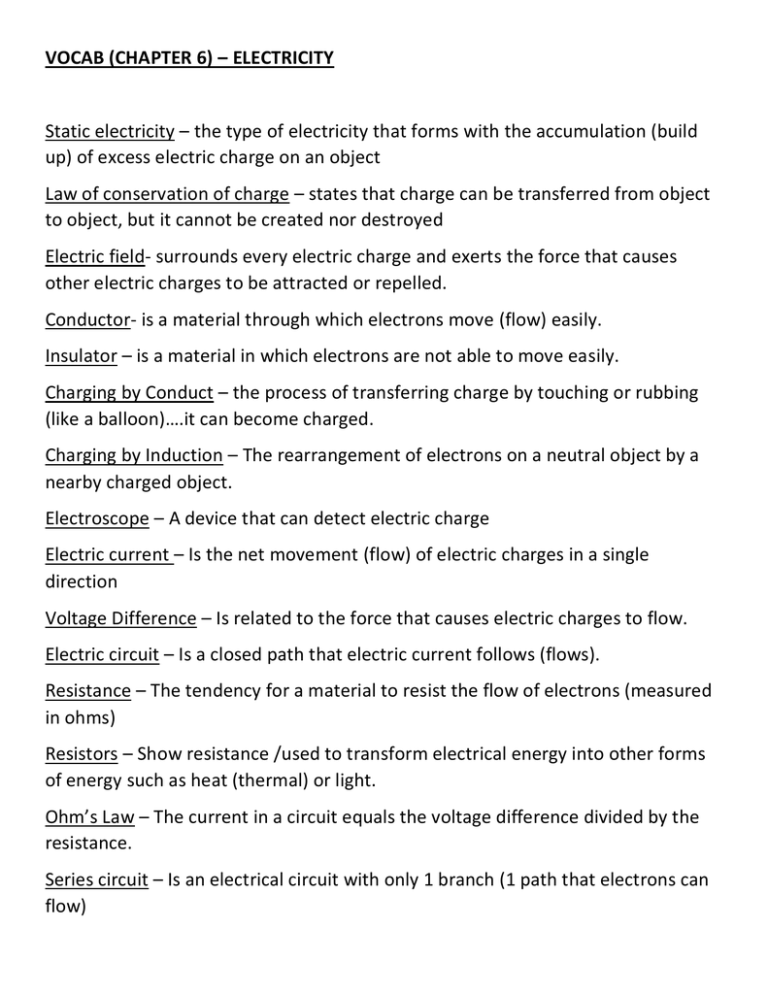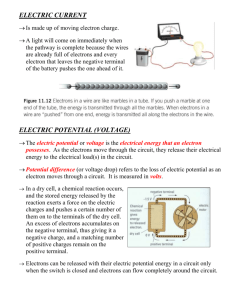VOCAB (CHAPTER 6) – ELECTRICITY Static electricity – the type of
advertisement

VOCAB (CHAPTER 6) – ELECTRICITY Static electricity – the type of electricity that forms with the accumulation (build up) of excess electric charge on an object Law of conservation of charge – states that charge can be transferred from object to object, but it cannot be created nor destroyed Electric field- surrounds every electric charge and exerts the force that causes other electric charges to be attracted or repelled. Conductor- is a material through which electrons move (flow) easily. Insulator – is a material in which electrons are not able to move easily. Charging by Conduct – the process of transferring charge by touching or rubbing (like a balloon)….it can become charged. Charging by Induction – The rearrangement of electrons on a neutral object by a nearby charged object. Electroscope – A device that can detect electric charge Electric current – Is the net movement (flow) of electric charges in a single direction Voltage Difference – Is related to the force that causes electric charges to flow. Electric circuit – Is a closed path that electric current follows (flows). Resistance – The tendency for a material to resist the flow of electrons (measured in ohms) Resistors – Show resistance /used to transform electrical energy into other forms of energy such as heat (thermal) or light. Ohm’s Law – The current in a circuit equals the voltage difference divided by the resistance. Series circuit – Is an electrical circuit with only 1 branch (1 path that electrons can flow) Parallel Circuit – Contains 2 or more branches for current Switch / FUSE /Circuit Breaker – device that opens and closes a circuit to prevent short circuit Electrical Power- Is the rate at which electrical energy is converted to another form of energy Open circuit = Electrons will not flow (lightbulb will not light up) Closed circuit = Electrons will flow (lightbulb will light up) batteries = voltage source that gets the current to start flowing. Alternating current – The kind of current from household electrical outlets (In the United States the alternating current (electrons) changes directions 120 times each second. Direct current – Never changes direction (like batteries) Lightning - An electric discharge from the sky to the ground during a storm current = is measured in amps and is the flow of electrons….which have a negative charge (opposite charge of protons which are a positive charge)…. Breaker = (as in circuit breaker)…… A switch that open a circuit when too much current is flowing



